Need for indigenization of imported machinery components stressed
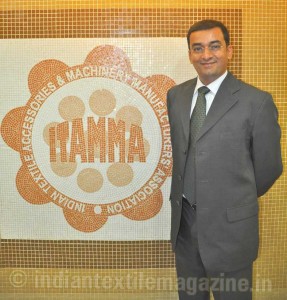
The 70th annual general meeting of the Indian Textile Accessories and Machinery Manufacturers’ Association (ITAMMA) was held in Mumbai recently. Mr. Sushil Jiwarajka, Chairman of FICCI, Western Region, was the Chief Guest and Mr. Prakash Bhagwati, Chairman, TMMA (I), the Guest of Honour.
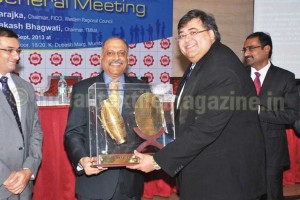
In his address, Mr. Naresh Mistry, ITAMMA President, spoke on the current Indian textile industry scenario and the future trends. The changing scenario is once again following the trend of composite functioning under one roof. Further, with the initiatives taken by the Ministry of Textiles, and by floating various subsidy schemes, the level of technology and automation has shown a remarkable improvement.
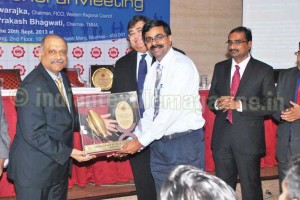
At the same time, he said, the entire range of textile machinery and accessories, including the latest generation machines, are produced by the Indian textile engineering industry (TEI). Many units manufacturing textile machinery have both technical and financial collaborations facilitating transfer of updated and new technology to Indian entrepreneurs. The latest technology thus obtained from abroad and developed indigenously has enabled the Indian industry to compete in the international markets, both in terms of quality and prices.
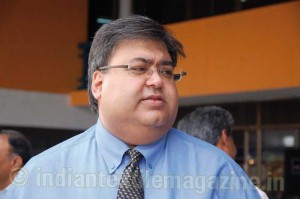
Mr. Mistry further pointed out that the data of State-wise and cluster-wise figures of textile engineering units in India indicate that Ahmedabad with 462 units (40 per cent), Coimbatore with 423 units (37 per cent), Surat with 103 units (10 per cent) and Mumbai with 64 units (six per cent) are the four major clusters contributing to more than 50 per cent of the total production turned out. The data of segment-wise manufacturing units of the machines and accessories indicated the contribution of spinning units at 37 per cent, followed weaving units at 25 per cent, textile machinery parts at 17 per cent and processing machines & spares at 12 per cent.
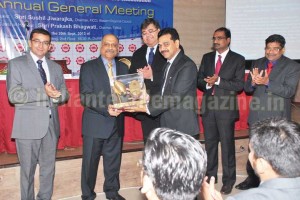
The total production of textile machinery & accessories amounted to Rs. 5,650 crores during 2012-13, recording a seven per cent rise when compared with the previous year. Capacity utilisation was also up four per cent, while industrial production too recorded a handsome growth of 2.5 per cent.
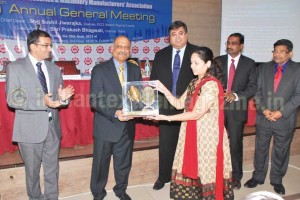
According to him, the above achievements were possible due to a remarkable rise of about seven per cent in the growth of the capital goods sector during 2012-13. Textile machinery imports at Rs. 8,558 crores increased by 14.10 per cent and exports at Rs. 1,462 crores were down by 4.17 per cent. This calls for indigenization of imported components under the Common Facility Centres (CFCs) and through joint ventures and collaborations for technology transfers. The selection of machines & accessories has to be necessarily based on considerations of indigenization and joint ventures.
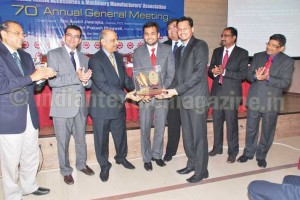
At the same time, in order to fulfill the demand of automation and level of technology in the field of computer / electronics / pneumatics / hydraulics / engineering, etc., there is an urgent need to make development of trained manpower mandatory. ITAMMA has already submitted a proposal of a certificate course titled “Inventing the Skills” to the Ministry of Textiles.
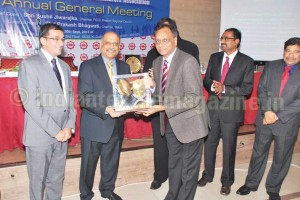
Referring to the cluster development initiatives, Mr. Mistry said that the Ahmedabad cluster has completed one Lean Manufacturing Programme with a special purpose vehicle (SPV) of 12 members. With a view to passing on the benefit to the other members, the cluster has decided to go for the second programme of this nature in Mumbai and Coimbatore.
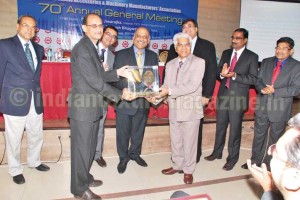
Realising that the resource conservation (energy, water) and automation would be the key areas for future innovation, individual design awareness programmes were organized in Ahmedabad, Coimbatore and Surendranagar. Further, the Design Clinic Scheme has been implemented in the Ahmedabad cluster, and steps are being taken to help the members in execution of design development projects, Mr. Mistry added.
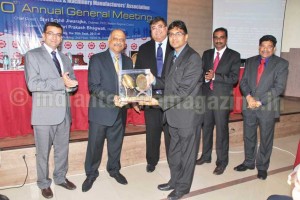
Recommendations
The following recommendations were made at the AGM to the Ministry of Textiles for “policy support to assist growth and competitiveness of Indian textile machinery & accessories manufacturers”.
Special technology development and common facility centres should be set up in the North (Delhi), West (Mumbai or Ahmedabad) and the South (Coimbatore).
Only five-year-old pre-owned textile machinery should be made eligible to be funded under TUFS as ITMA, held every four years, always showcases new technologies.
Allow duty-free import of components of machines that are allowed import duty-free. Also allow duty-free sale of domestic machinery parts against EPCG entitlements.
Excise duty on textile machinery and parts should be reduced to five per cent since mills cannot take CENVAT benefit. Also, levy a nominal excise duty of one or two per cent on yarn and fabrics to prevent breaking the CENVAT chain without burdening textile manufacturers. This measure will also help prepare switchover to the GST regime easily.
Provide a duty drawback of six per cent on all textile machinery, parts and accessories under Chapter 8448 without the need to apply for setting of rates for individual items (China provides 16 per cent). If individual items are eligible for more than six per cent, individual application for revision of rates can be mandated in such cases.
A special scheme may be introduced for supporting export marketing and R&D with soft loans and subsidies.
Extend a line of credit/soft loans to foreign buyers of Indian textile machinery, parts and accessories to facilitate export. China uses this strategy very successfully.
The Government policy is biased in favour of imports. Many machines, including the used ones, are allowed to be imported duty free or at concessional rates, whereas local manufacturers have to pay duty on components and also pay excise and CST/VAT.
China has started exporting to India in a big way, thanks to the low cost prevalent there, even though the quality is poor in comparison to European and even Indian machinery. One of the big attractions for mills is the soft credit available for purchase of Chinese machinery. China gives 16 per cent export subsidy on textile machinery and parts. So, overall exports from China in 2012 amounted to $2.2 billion. Its exports to India alone came to $400 million (Rs. 2,400 crores).
Most of the manufacturers of textile machinery in India are MSMEs who lack the resources and capabilities to be at the cutting edge of technology and efficiency. They need hand holding to become world class.
With regard to import of prototypes for R&D and conducting trials, the ITAMMA members would like to avail themselves of the trend in Japan and China based on the principles of collaboration and licences on buying instead of inventing the wheel.
For many years the Government policy was such that one could import such items by executing a bond in favour of the customs for 100 per cent of the customs duty payable and re-export the item when they would get back 95 per cent of the customs duty paid and the bond would get cancelled.
Some time ago the rules were changed arbitrarily, and the ITAMMA members had to pay the full customs duty for prototypes and get a refund on a slab basis depending on how long the equipment remained in India. When a new product is manufactured, free trials have to be taken in the textile mills, which would last quite long depending on the product. The members will only get a part refund of the customs duty paid, and in most cases it involves huge delay and expenses. Hence the need to revert back to the old system which was working very well.
Mr. Diven Dembla, is the newly-elected President of ITAMMA, with his team consisting of Mr. S. Senthil Kumar, Mr. Mayank Roy and Mr. Kishore Khaitan.
As part of the AGM, the ITAMMA Export Excellence Awards were presented to member-companies.